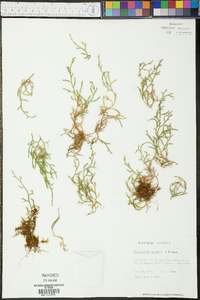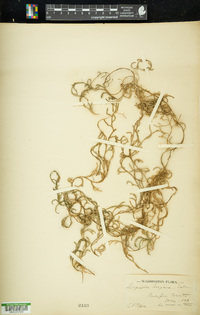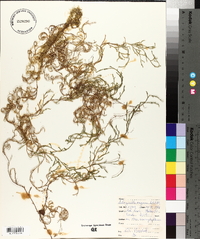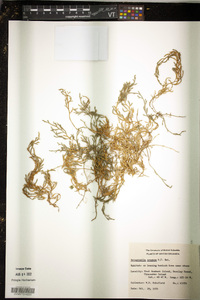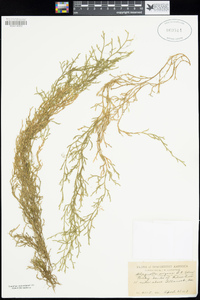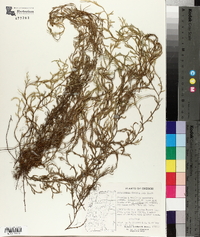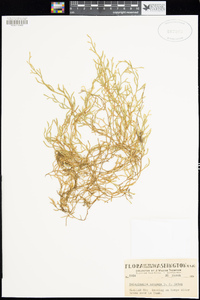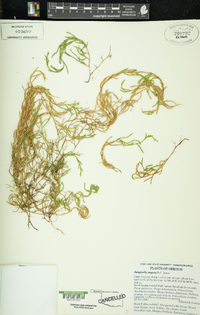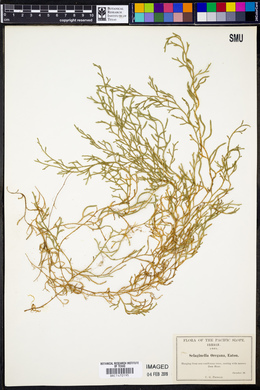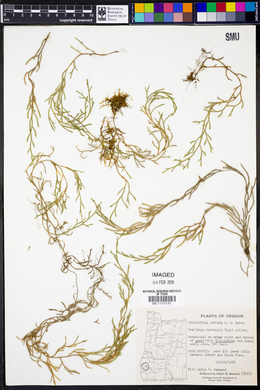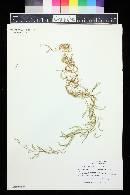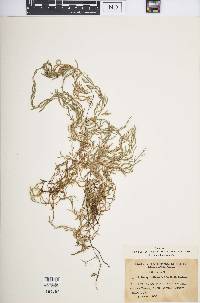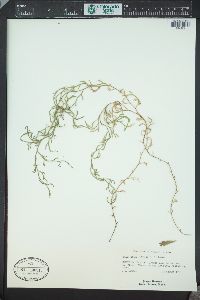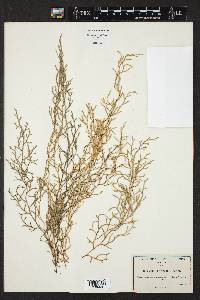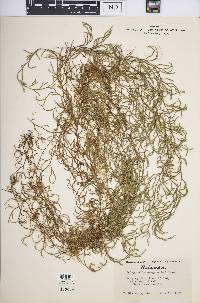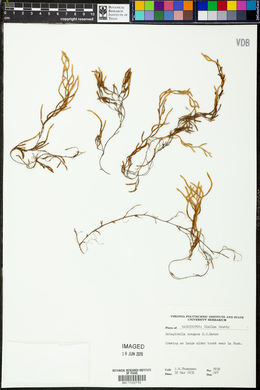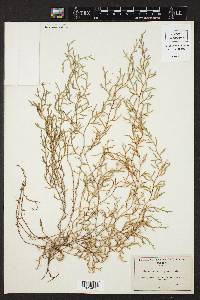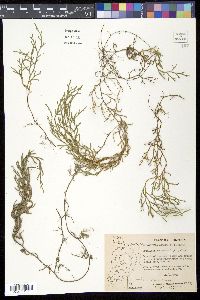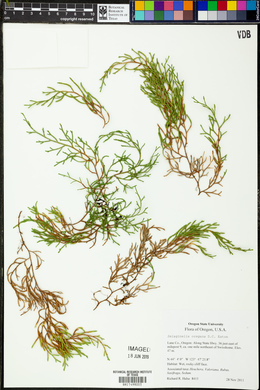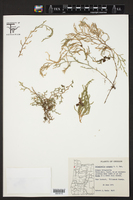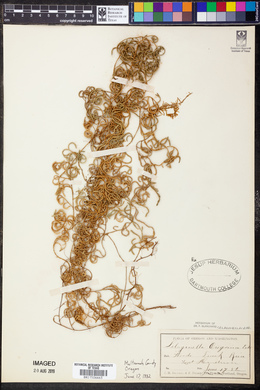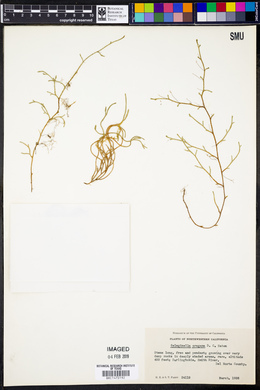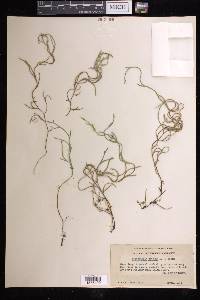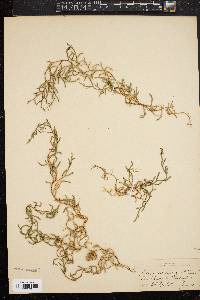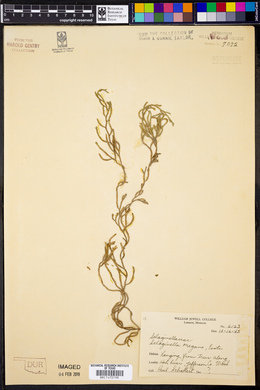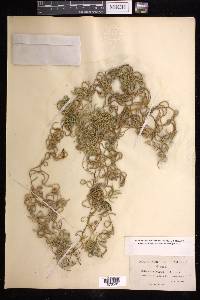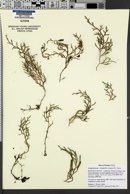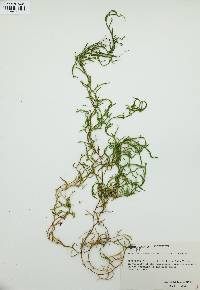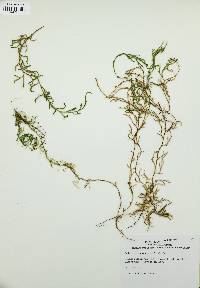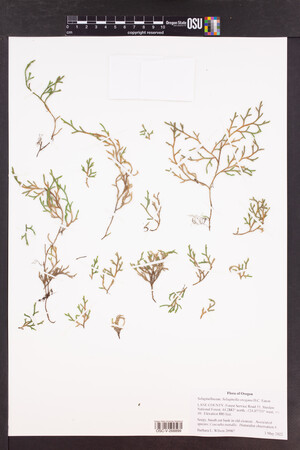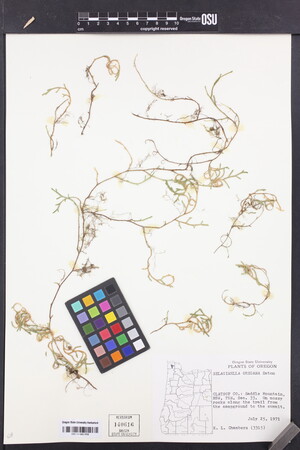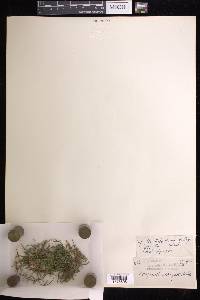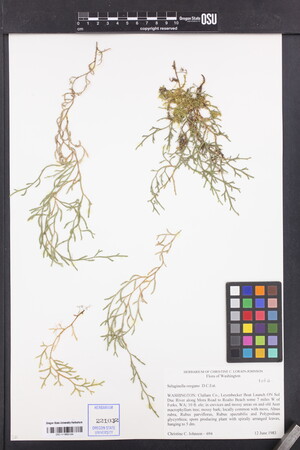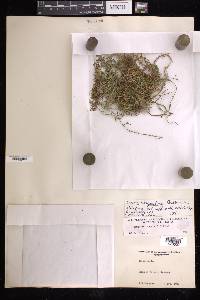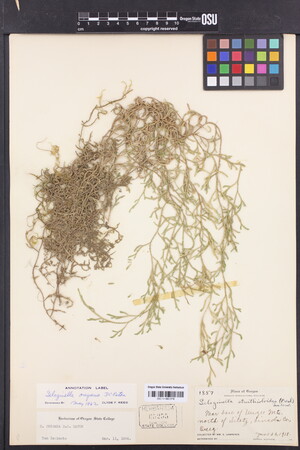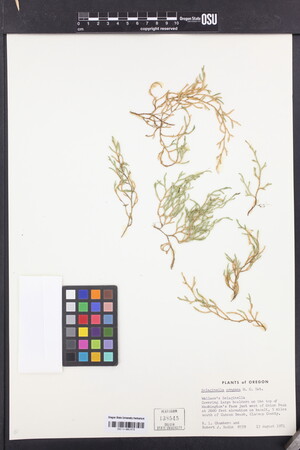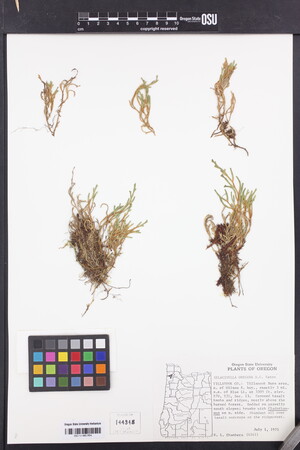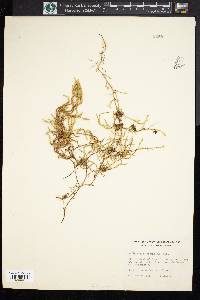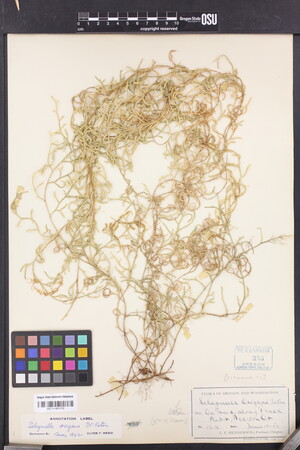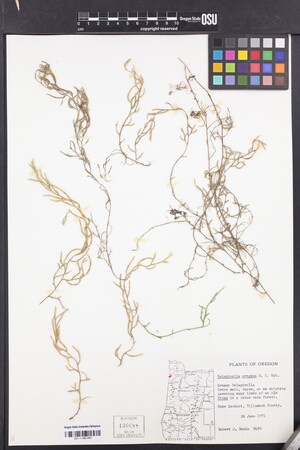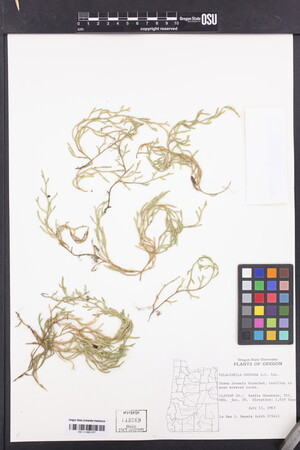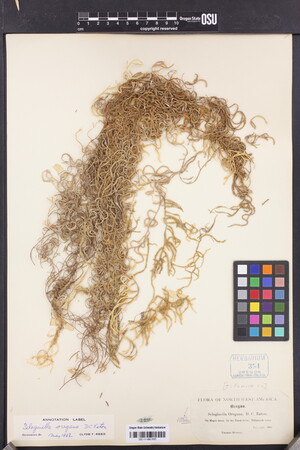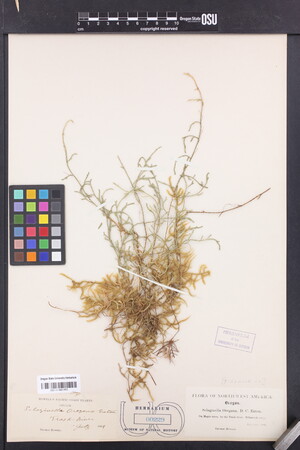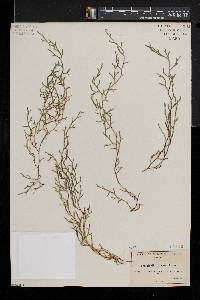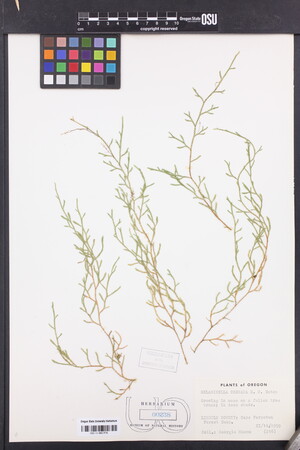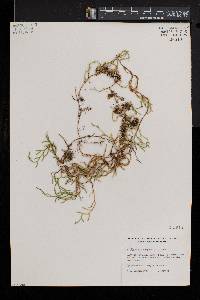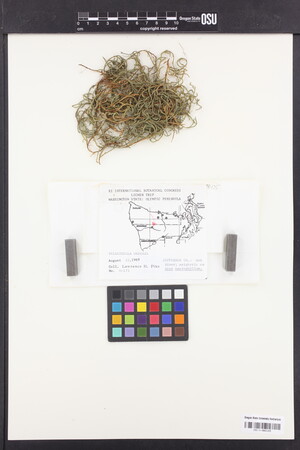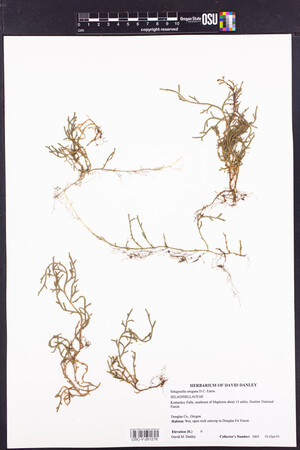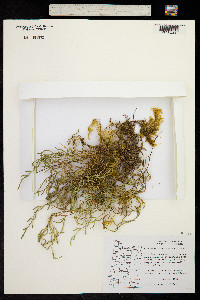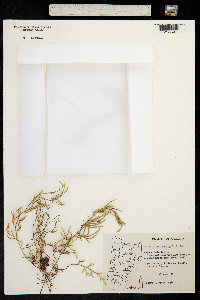Selaginella oregana
|
|
|
|
Family: Selaginellaceae
Oregon Spike-Moss
|
Plants usually epiphytic, less often terrestrial, forming festoonlike mats. Stems radially symmetric, long-pendent, not readily fragmenting, irregularly forked, without budlike arrested branches, tips straight; main stem indeterminate, lateral branches determinate, ascending, 1-forked. Rhizophores borne on upperside of stems, restricted to base of pendent stems, or borne throughout on terrestrial stems, 0.13--0.2 mm diam. Leaves monomorphic, in alternate pseudowhorls of 4 (on main stem) and 3 (on lateral branches and secondary branches), loosely appressed, ascending, green, narrowly triangular-lanceolate to linear-lanceolate, 2--3.35 X 0.4--0.6 mm; abaxial ridges prominent, often flanked by two bands of cells (several rows wide) with whitish papillae (only in S . oregana , better seen on dry leaves); base cuneate and strongly decurrent on main stems and lateral branches or rounded and slightly decurrent to adnate on secondary branches, glabrous (seldom pubescent); margins entire or with very short cilia or denticulate, cilia few, transparent, scattered, ascending to slightly spreading, dentiform toward apex, 0.02--0.04 mm; apex slightly keeled, long-attenuate, short-bristled; bristle (hard to distinguish from apex) transparent or greenish transparent to yellowish or brownish (in old leaves), smooth, sometimes breaking off, (0.07--)0.17--0.4 mm. Strobili often paired, 1--6 cm; sporophylls lanceolate to narrowly ovate-lanceolate, abaxial ridges prominent, base glabrous, margins short-ciliate to denticulate (at middle), entire toward both base and apex, apex keeled to plane, short-bristled or merely long-attenuate. Pendent on trunks and branches of mossy trees ( Acer macrophyllum Pursh, Populus trichocarpa Torrey & A. Gray ex Hooker, and Alnus rubra Bongard) or on deep-shaded and moist rocky banks; of conservation concern; 0--200 m; B.C.; Calif., Oreg., Wash. Selaginella oregana , one of the most distinct species in the flora, is easily distinguished by its usually long, epiphytic-pendent stems, slightly loose strobili, and curled branches (in dry specimens). In the flora, S . oregana is most closely related to S . underwoodii . It is sometimes confused with S . wallacei (see discussion), and it shares some characteristics with the Mexican species, S . extensa L. Underwood. In S . oregana , very often where a branch fork occurs, one of the branches is arrested (R. M. Tryon 1955). The strobili of S . oregana are among the longest in the flora, and they often show several novel features. Very often the apex of a strobilus undergoes a period of vegetative growth, thus becoming a vegetative shoot, and after an interval the apex reverts to the fertile condition, forming a strobilus again. In other cases, the strobilus forks, giving rise to two new strobili.
|

